Olympic hockey is an exciting, fast-paced sport that represents the pinnacle of athletic achievement on the world stage. In this ultimate guide to Olympic hockey, I will explore its rich history, the dynamics of the game, and the incredible athletes who have made their mark in this arena. Whether you are a long-time fan or just curious about this thrilling competition, there’s something here for everyone.
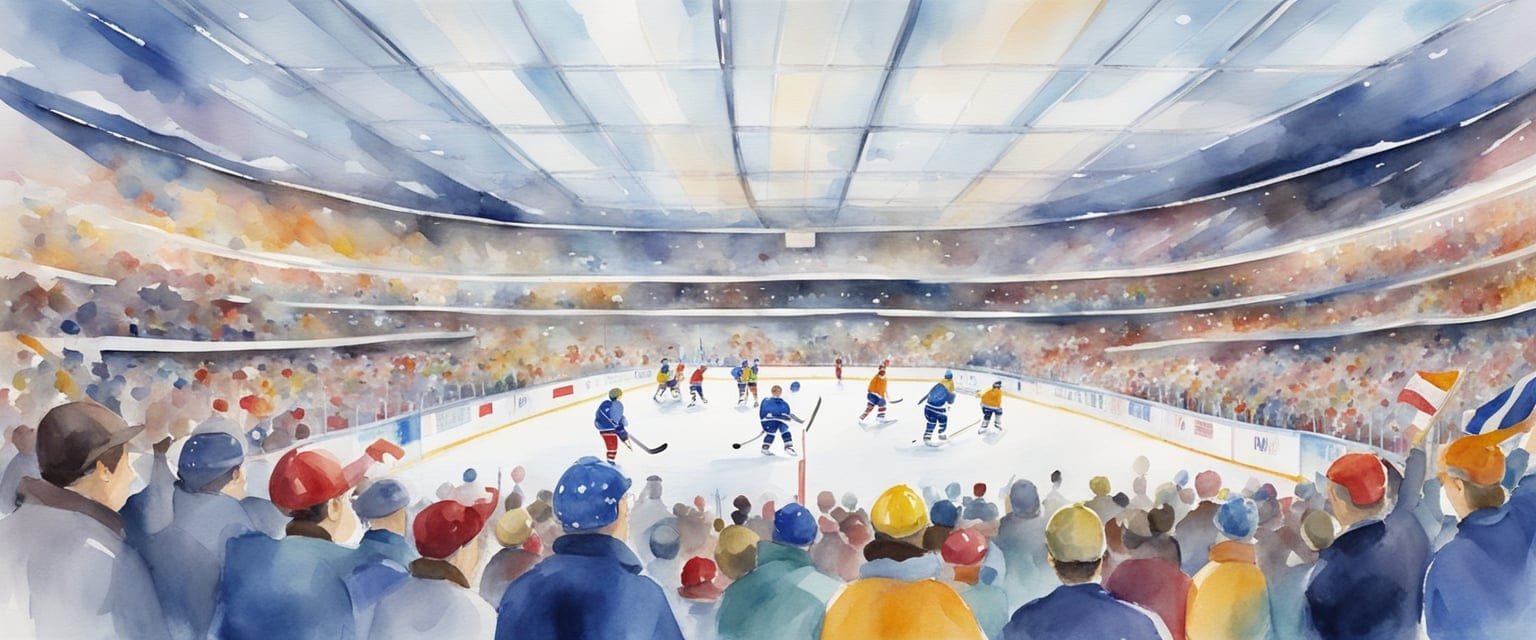
As I dive into the thrilling world of Olympic hockey, I will share insights on the tournaments that define the sport and highlight the teams that have shown outstanding performance over the years. From legendary moments to the latest trends in hockey gear, this guide will provide a comprehensive understanding of what makes Olympic hockey a unique experience for spectators and athletes alike.
I look forward to taking this journey with you and uncovering the many layers of this beloved sport.
Key Takeaways
- Olympic hockey has a rich history filled with memorable moments and legendary players.
- Understanding the tournament structure is key to appreciating the competition.
- The sport’s global impact continues to grow, shaping the future of hockey.
History of Olympic Hockey
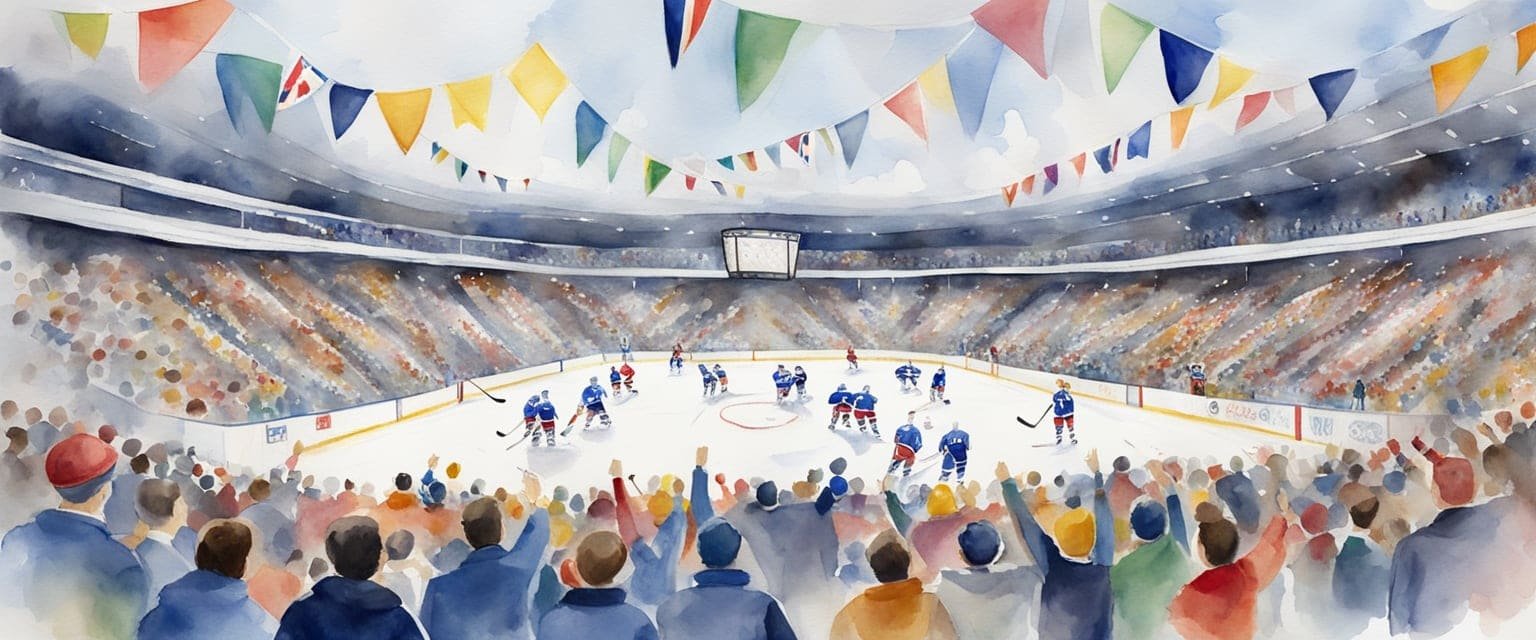
Hockey has a rich and exciting history in the Olympics, showcasing thrilling competitions and memorable moments. From its early origins to the rise of legendary teams, Olympic hockey has evolved into a beloved sport that captivates fans around the world.
Origins and Evolution
Hockey first appeared at the 1908 Olympics held in London. It wasn’t included in 1912 but made a return at the 1920 Antwerp Games. That’s when ice hockey began its journey as an Olympic sport. Initially, teams consisted of seven players, and Canada quickly emerged as a dominant force.
The first Olympic gold medal for ice hockey was awarded at the 1924 Chamonix Games. This marked the beginning of serious competition among countries. Over the years, teams like the USSR and Sweden became fierce rivals. The sport grew in popularity and became a key event in both the Winter and Summer Olympics.
Notable Olympic Hockey Moments
Some unforgettable moments have shaped Olympic hockey history. For example, Canada won their first Olympic gold medal in ice hockey at the 1924 Games. They faced strong competition from teams like the United States and Sweden.
Another significant moment happened during the 1980 Lake Placid Olympics. The United States defeated the heavily favored Soviet team in a game that is still called the “Miracle on Ice.” This upset is celebrated as one of the greatest moments in sports history.
Each Olympic Games brings new stories and rivalries, making hockey a thrilling spectacle. I love watching these developments and seeing how the sport continues to grow.
Understanding the Game
Ice hockey is a fast-paced sport that combines skill, strategy, and teamwork. I find it fascinating how the rules, positions, and scoring work together to create such an exciting experience. Let’s dive into the key elements of the game.
Rules and Regulations
The game of hockey follows strict rules to ensure fair play. Each team has six players on the ice, including a goaltender. A standard game consists of three periods, each lasting 20 minutes.
I should mention a few important penalties that can occur:
- Tripping: A player cannot use their stick or body to trip an opponent.
- High-sticking: Raising the stick above shoulder level is not allowed.
- Icing: When the puck is shot from one end of the rink to the other without being touched, play stops.
These rules help keep the game safe and enjoyable for everyone involved.
Hockey Positions and Roles
Each player on the team has a specific role. Understanding these roles enhances the viewing experience.
- Forwards: They focus on scoring goals. Forwards are often the fastest players on the team.
- Defensemen: Their main job is to protect the goal. They work to stop opposing players from scoring.
- Goaltender: The goaltender guards the net and tries to block shots. They must read the play and react quickly.
Knowing the players’ positions helps me appreciate their strategies and teamwork on the ice.
Scoring and Penalties
Scoring is a thrilling part of hockey. A goal is scored when the puck completely crosses the goal line. Each goal is worth one point, and the team with the most points wins.
« Ultimate Guide to Olympic Golf: Everything You Need to Know
Ultimate Guide to Olympic Judo: Techniques, History, and Tips for Success »
I should also touch on penalties that affect scoring. For instance, a power play occurs when one team has a player in the penalty box. This gives the opposing team a temporary advantage, which can lead to increased scoring opportunities.
Understanding these dynamics makes the game even more exciting, as I watch players navigate the ice, aiming for victory while adhering to the rules.
Olympic Hockey Tournaments
Olympic hockey tournaments are thrilling events where nations compete for the gold, silver, and bronze medals. The excitement builds from the qualification rounds to the final matches, showcasing the skills of top players, including many NHL stars.
Qualification and Groups
To qualify for the Olympic hockey tournament, teams must perform well in their regional competitions. Each continent has its own qualifying process, which can vary greatly.
Countries like Canada and the United States often secure spots due to their strong hockey programs. The tournament typically features 12 teams divided into groups, with the format ensuring that every match is crucial.
After the group stage, the top teams advance to the knockout rounds, which heightens the excitement and stakes for each game. This format makes it engaging for fans as they cheer on their national teams.
Past Winners and Medalists
Over the years, Olympic hockey has seen incredible performances and memorable moments. The United States captured attention during the 1980 Winter Olympics with the famous “Miracle on Ice,” defeating the Soviet Union and winning the gold medal.
Canada is another powerhouse in Olympic hockey, having secured multiple gold medals, including at the 2010 Vancouver Games with Sidney Crosby’s dramatic “golden goal.” The diversity in medal winners adds to the tournament’s legacy, with various countries proudly claiming silver and bronze medals.
Format of the Competition
The Olympic hockey competition follows a well-structured format. Initially, teams are placed into two groups for the preliminary round.
Each team plays every other team in its group. Points are awarded for wins and ties, with the top teams from each group advancing to the quarterfinals.
From there, it’s a single-elimination setup leading to the final game. This eliminates the chance for error as teams battle for the coveted medals. The excitement and unpredictability of each match keep me engaged throughout the tournament.
Athletes and Teams
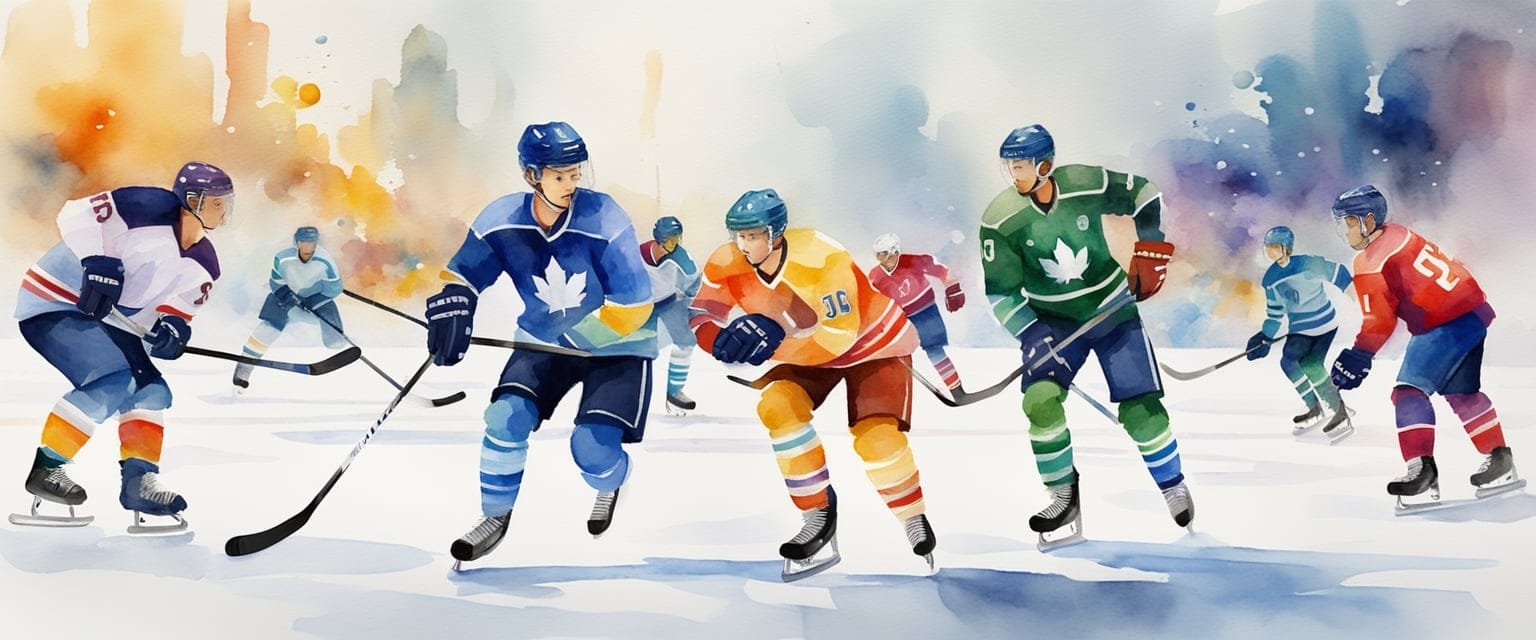
In this section, I will focus on the standout athletes in Olympic hockey, the strategies employed by top teams, and the performances and rivalries among different countries. The dynamic nature of the game brings excitement and passion, especially during the Olympics.
Star Players and Their Impact
One player that stands out in Olympic history is Ilya Kovalchuk. Known for his speed and scoring ability, he has made significant contributions to the Russian national team. Kovalchuk’s strong Olympic performances often give his team an edge.
Another rising star is Owen Power from Canada. His impressive skills and leadership on the ice have made him a key player for Team Canada. I enjoy watching how his presence influences the game’s flow and motivates his teammates.
There have also been legendary players from Sweden and the United States who have left their mark on the Olympics. Their talent makes the competition thrilling to watch.
Team Strategies and Dynamics
Teams use various strategies to excel in Olympic hockey. For example, Canada often relies on a strong offensive game combined with solid defense. Their ability to transition quickly between offense and defense puts pressure on opponents.
In contrast, teams like Russia may focus on speed and agility, creating fast-paced plays that can catch opponents off guard. Each country’s approach reflects its playing style, strengths, and training methods.
Additionally, team dynamics play a crucial role. A strong bond among teammates creates better communication on the ice. This synergy often leads to exceptional teamwork and success in high-stakes matches.
Country Performances and Rivalries
Countries like Canada and the United States have a long-standing rivalry that makes Olympic matches electrifying. The gold medal game in 2010 was a thrilling example of this fierce competition.
Sweden has also proven to be a powerful contender, consistently performing well in the Olympics. Their strategic gameplay and teamwork have earned them several medals over the years.
Russia, with its rich hockey history, often fields strong teams that challenge the best. The passion for hockey in these countries creates an environment of rivalry and excitement, making every Olympic tournament memorable.
Olympic Venues and Infrastructure
In Olympic hockey, the venues play a crucial role in the athletes’ experiences. The perfect arenas and well-planned facilities ensure that the competitions run smoothly and fans enjoy every moment.
Iconic Hockey Arenas
One of the premier venues for the upcoming Paris 2024 Olympics is the Yves-du-Manoir Stadium. This arena is designed specifically for hockey, accommodating 15,000 spectators. Its capacity provides an electrifying atmosphere for both men’s and women’s matches.
During previous Olympics, like in Beijing, hockey was hosted in modern arenas with state-of-the-art facilities. These locations help athletes perform at their best. I think about how exciting it would be to play in venues that have hosted legends and unforgettable moments in sports history.
Facility Design and Characteristics
The design of Olympic hockey venues focuses on functionality and fan experience. Each arena includes features like competition pitches with top-quality playing surfaces that meet strict international standards.
For instance, the venues often feature high-tech scoreboards and viewing screens. These enhance spectators’ enjoyment. Additionally, well-designed hockey rink boards ensure player safety while providing a clear view of the game for fans.
A good facility makes it easier to host events for various levels, from high school hockey rinks to professional leagues like the NHL. This flexibility encourages a broader audience to connect with the sport.
Hockey Equipment and Gear
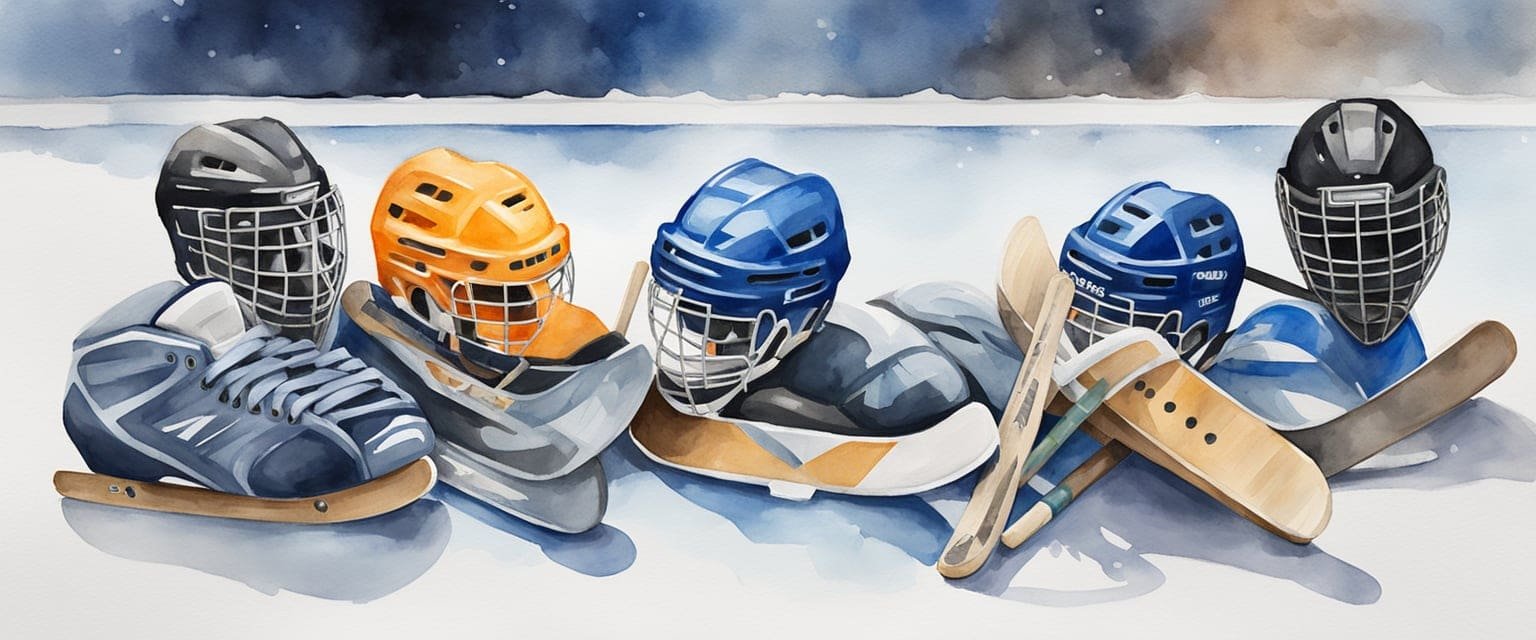
When diving into Olympic hockey, understanding the equipment players use is crucial. The right gear not only enhances performance but also ensures safety on the ice. I’ll cover the essentials every player should have and the recent advancements that improve their gameplay.
Player Equipment Essentials
Every hockey player needs specific gear to perform at their best. Key items include:
- Helmet: Protects the head and is required for safety regulations.
- Shoulder Pads: These pads shield the upper body from impacts.
- Elbow Pads: Essential for protecting joints during play.
- Hockey Pants: Designed for comfort and protection, they cover vital areas while allowing for mobility.
- Shin Guards: Prevent injury from pucks and sticks.
- Gloves: Ensure a firm grip on the stick while safeguarding the hands.
Additionally, players wear skates specifically designed for hockey. These skates have a unique blade shape for better control. More advanced players might also use a field hockey net for practices.
Technological Advancements
In recent years, technology has transformed hockey gear. New materials are lighter and stronger, improving player agility. For instance, carbon fiber is popular in skates and sticks for its durability.
Smart helmets now come with sensors to track impacts and measure performance. This technology helps prevent injuries.
Another fun development is the use of commercial air hockey tables for training. These tables can improve hand-eye coordination and reflexes.
Investing in high-quality equipment not only raises performance but also boosts confidence on the ice.
Global Impact of Olympic Hockey
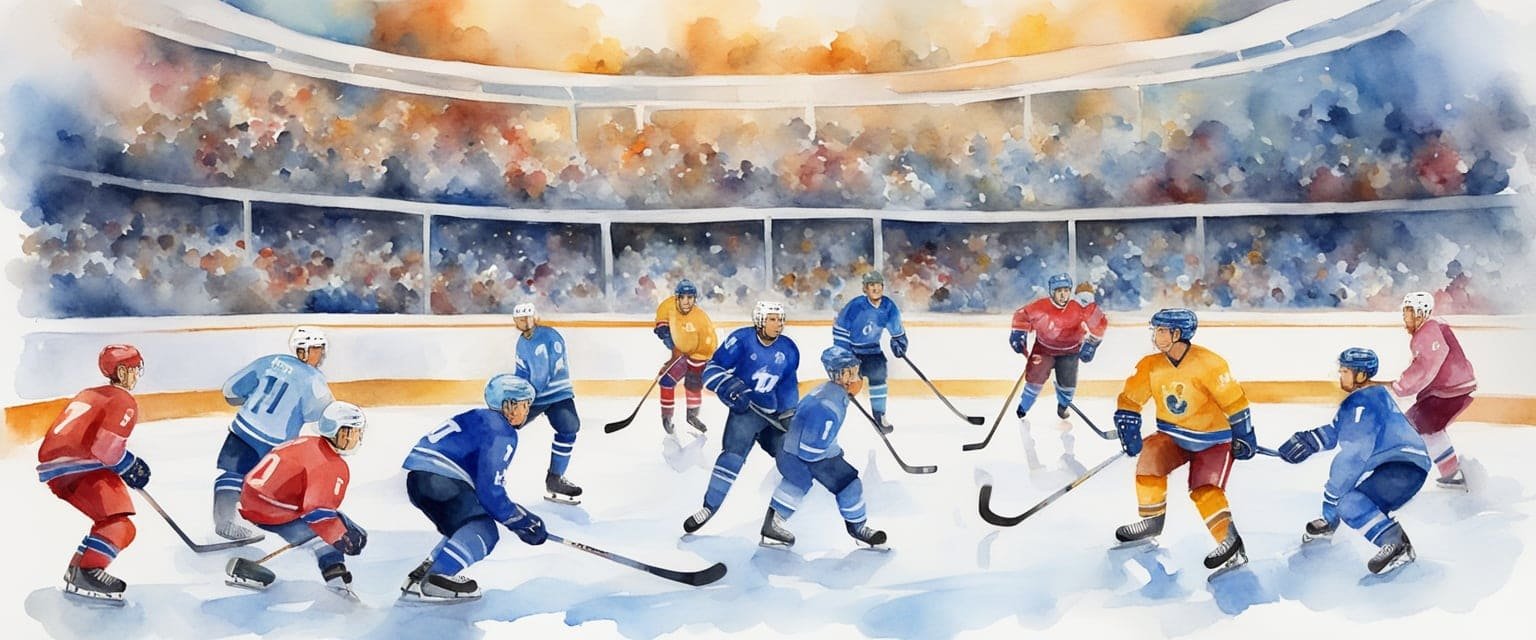
The Olympic hockey tournament has created significant cultural and sporting influences across the globe. Its reach extends from established hockey nations to those where the sport is still growing. The event not only showcases talent but also fosters community and national pride.
Cultural Influence and Trends
Hockey has evolved into a cultural phenomenon in many countries. In places like Germany and Belgium, the sport has captured the hearts of fans, inspiring local leagues and youth programs.
Finland and Switzerland are also notable in their hockey culture. They celebrate local players and have developed a strong community around the sport. Countries like Latvia and Denmark are building new traditions through their national teams, creating a sense of pride during international competitions.
From Asia to Argentina, regional adaptations of the game have emerged, blending local customs with hockey. This cultural blend helps bring new fans into the sport, making it more vibrant and diverse.
Expansion of Hockey Worldwide
The Olympic platform has accelerated the global reach of hockey. Countries like India and Spain are investing in hockey development programs to nurture young talent. The success of teams in competitions is driving interest among youth.
Tokyo, as an example, shows how urban environments embrace hockey, turning city centers into vibrant spaces for fans. The sport’s inclusion in schools helps build a solid foundation for future players.
Nations such as Great Britain and Australia are also expanding their hockey programs, emphasizing grassroots participation that makes the sport accessible.
Overall, the global impact of Olympic hockey is evident in rising participation rates, increased viewership, and a growing community that embraces hockey’s unique culture.
The Road to Becoming an Olympian
Becoming an Olympian in hockey is a journey that requires dedication, training, and the right guidance. I will explore the key aspects of training and preparation, as well as the path to becoming a hockey scout or coach.
Training and Preparation
To train for the Olympics, I focus on a structured program that includes both physical and mental preparation. I spend hours on the field, honing my skills with stick handling, passing, and shooting drills.
Strength and conditioning are also crucial. I work with trainers to build endurance and flexibility. Weight training, sprinting, and agility exercises are important in enhancing my performance.
Eating a balanced diet helps fuel my body, too. I pay attention to my nutrition, which includes lean proteins, whole grains, and plenty of fruits and vegetables. Staying hydrated is essential to keep my body functioning well.
I also participate in competitive games regularly. This experience allows me to apply what I practice and adapt to different playing styles.
Becoming a Hockey Scout or Coach
If coaching or scouting interests me, I look into gaining relevant experience. I might start with local youth teams to learn the basics of coaching and player development. Understanding the game deeply is key to guiding young athletes.
The USA Hockey coaching program offers certifications that enhance my skills as a coach. Attending workshops and clinics can be valuable. Networking with other coaches helps me learn and grow in the field.
Scouting requires me to identify talent. I observe players during games, paying close attention to their skills and potential. I take notes on players’ strengths and areas for improvement, which helps in recommending them for higher levels of competition.
By taking practical steps, I can contribute to the future of hockey both on and off the field.
The Olympic Brand
The Olympic brand is not just about sports; it embodies history, unity, and excellence. I find it fascinating how the design of Olympic medals and the marketing strategies behind the Games work together to create a powerful identity.
Medal Design and Significance
Olympic medals are a symbol of hard work and dedication. The design often features elements that represent the host country, the Olympic rings, and the year of the Games. Each medal is unique and carries great significance for athletes.
The medals are gold, silver, or bronze. The gold medal is actually made mostly of silver, with just a thin layer of gold on top. Athletes strive to earn these medals, as they represent the pinnacle of achievement in sports.
Marketing and Sponsorship
Marketing plays a crucial role in the Olympic brand. Major companies want to partner with the Olympics to boost their image. Sponsorships provide essential funding for the Games and help promote a spirit of unity.
Through advertisements and promotions, the Olympics reach millions of people. Sponsorship deals can be lucrative, making it possible for athletes and teams to thrive. As someone who appreciates the efforts behind such events, I enjoy seeing how brands align with Olympic values to connect with fans worldwide.
Event Coverage and Spectator Experience
Watching Olympic hockey is an exciting experience, whether you’re at the venue or at home. I want to share how you can catch the action live, enjoy replays, and catch all the best moments.
Live Games and Broadcasting
During the Olympics, I can follow the live hockey games through various broadcast options. Major networks often provide coverage, letting me watch all the thrilling matches, including the Gold Medal and Bronze Medal games. Channels might feature dedicated sports networks, ensuring I don’t miss any action.
For those who prefer online streaming, I can use platforms that show live games, making it easy to watch from anywhere. This accessibility helps me enjoy games with friends, adding to the excitement.
Replays and Highlight Reels
After watching live matches, I want to relive the excitement. Many broadcasters offer replays so I can catch up on any games I missed. Highlight reels are also a great way to see the best moments from each match, especially the goals that won crucial games.
I can often find these highlights on team websites or sports channels. This feature allows me to engage with memorable plays and share these moments with fellow fans.
Enjoying Olympic hockey goes beyond just watching live; it includes exploring replays and highlights, making the experience even more enjoyable!
Looking Forward
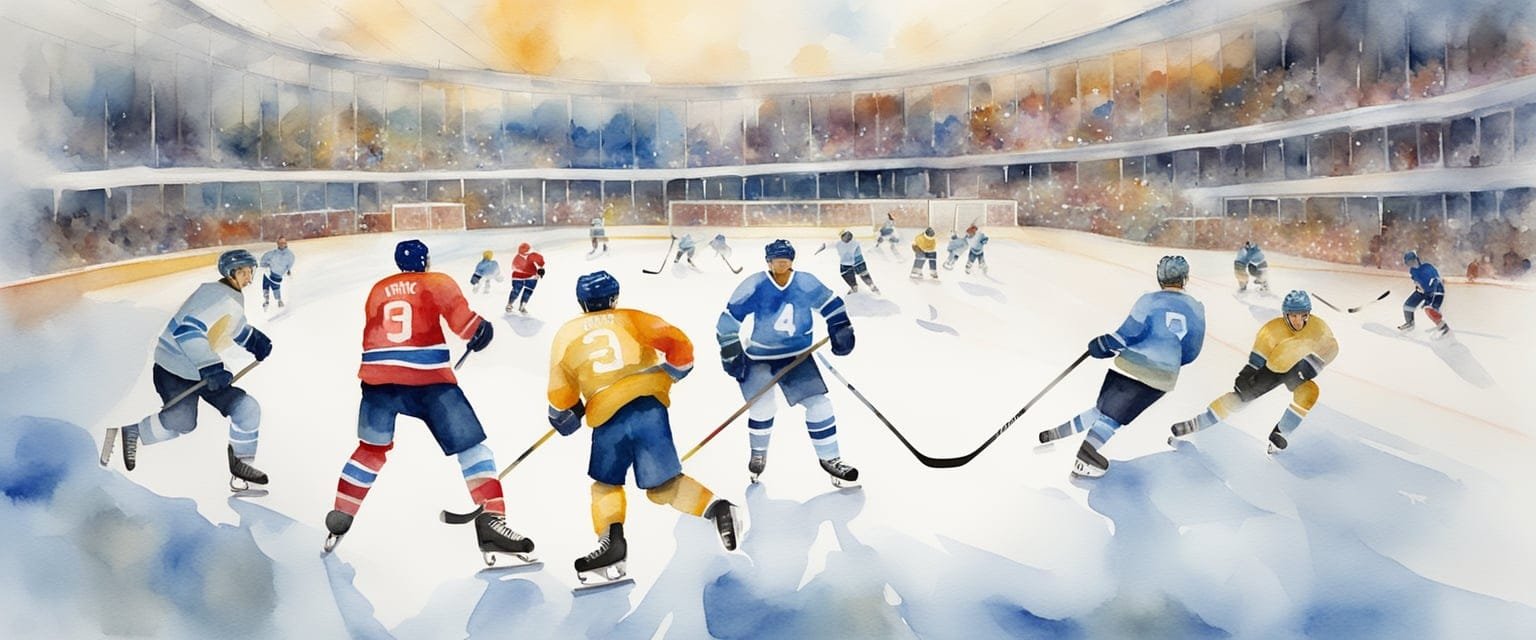
As I think about the future of Olympic hockey, I’m excited for the changes and innovations that lie ahead. The sport is evolving, and several important aspects will shape what Olympic hockey looks like in the coming years.
Future of Olympic Hockey
The landscape of Olympic hockey is changing, especially with the impact of leagues like the KHL and NHL. These leagues have produced some of the best talent in the world. Players from these leagues often compete on the Olympic stage, enhancing the level of play.
I believe international cooperation will continue to grow. Programs aimed at developing young talent will play a critical role in maintaining the competitive spirit. We can expect to see more nations investing in their hockey programs, leading to a richer experience for fans and players alike.
Innovation and Change
Innovation is key to the future success of Olympic hockey. As we witnessed during the 2022 Winter Olympics, technology is becoming essential. From real-time data analytics to advanced training methods, teams are using new tools to improve performance.
I also think we will see changes in broadcasting and fan engagement. Virtual reality experiences could allow fans to feel as if they are part of the action. This can enhance their connection to the sport and broaden its appeal, making Olympic hockey even more exciting to watch and participate in.
Frequently Asked Questions
I often hear questions about Olympic ice hockey, especially regarding the rules, training, strategies, and memorable moments. Here’s a look at some of the most common inquiries.
What are the basic rules one should know about Olympic ice hockey?
In Olympic ice hockey, two teams compete, each usually made up of six players: three forwards, two defensemen, and one goaltender. The game consists of three periods, each lasting 20 minutes. Teams score by shooting the puck into the opponent’s net. The team with the most goals at the end wins.
Can you share some training tips for aspiring Olympic hockey athletes?
Aspiring athletes should focus on skating skills, agility, and shooting accuracy. Off-ice training can include strength and conditioning exercises. Playing in various competitive leagues helps build experience and teamwork skills.
What strategies do teams often use in Olympic ice hockey matches?
Teams often use strategies like the overload, where they focus on one side of the ice to create scoring chances. The trap defense is another common tactic, where players try to limit the opponent’s movement and regain control of the puck. Good communication and teamwork are key to executing these strategies effectively.
Which countries have been historically successful in Olympic hockey and why?
Countries like Canada, the United States, and the Soviet Union have excelled in Olympic hockey. Their success is often attributed to strong youth development programs, skilled players, and a deep passion for the sport. These nations typically have a rich hockey culture that fosters talent from a young age.
How is the Olympic hockey tournament structured, from qualifiers to finals?
The tournament usually starts with a preliminary round where teams are divided into groups. The top teams advance to the knockout stages, including quarterfinals, semifinals, and then the final match. Each stage is crucial, as teams must perform their best to reach the medal rounds.
What are some memorable moments in Olympic hockey history?
Some unforgettable moments include the “Miracle on Ice” in 1980 when the U.S. team defeated the Soviet Union, and Sidney Crosby’s “golden goal” in 2010, giving Canada the gold medal against the U.S. These events showcase the intensity and passion that Olympic hockey brings to fans and players alike.
